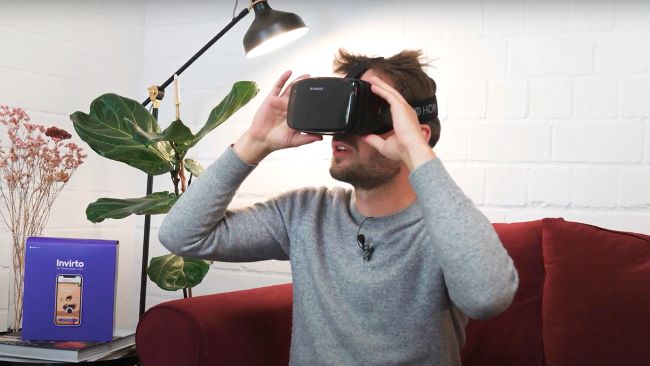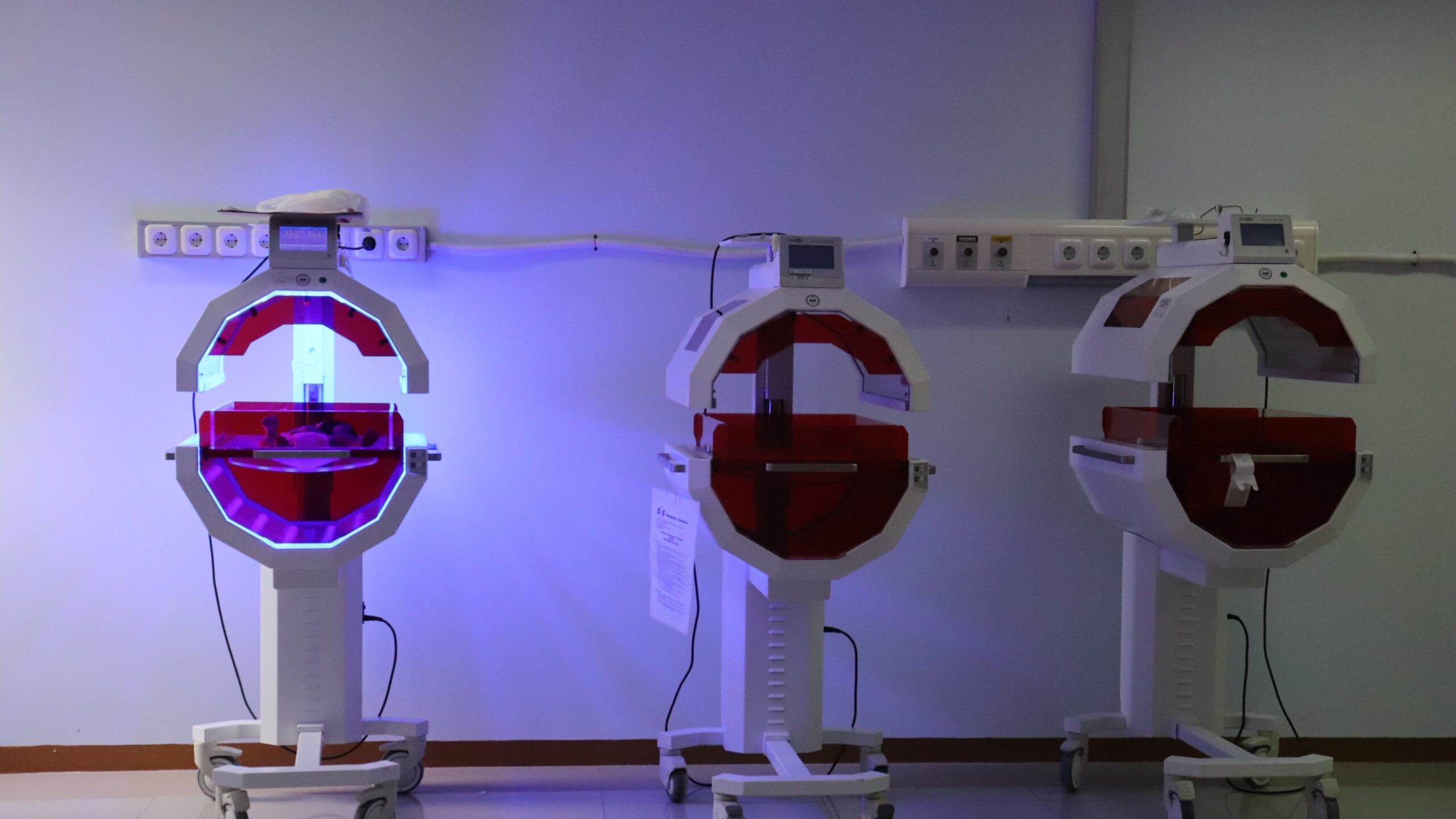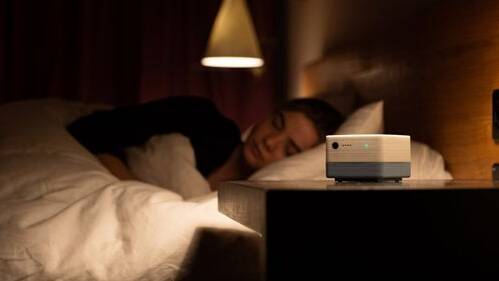Over 1 billion people globally suffer from sleep apnea and chronic respiratory diseases. To get diagnosed in a sleep clinic, patients face waiting times of more than 8 months and high costs. The outdated technology also makes long-term monitoring difficult. In this interview, Sleepiz CEO Soumya Dash tells us the story of how he decided to apply his knowledge in wireless signal analysis to the field of sleep, enabling a faster diagnosis of sleep and respiratory disorders and wider access to sleep data for all.
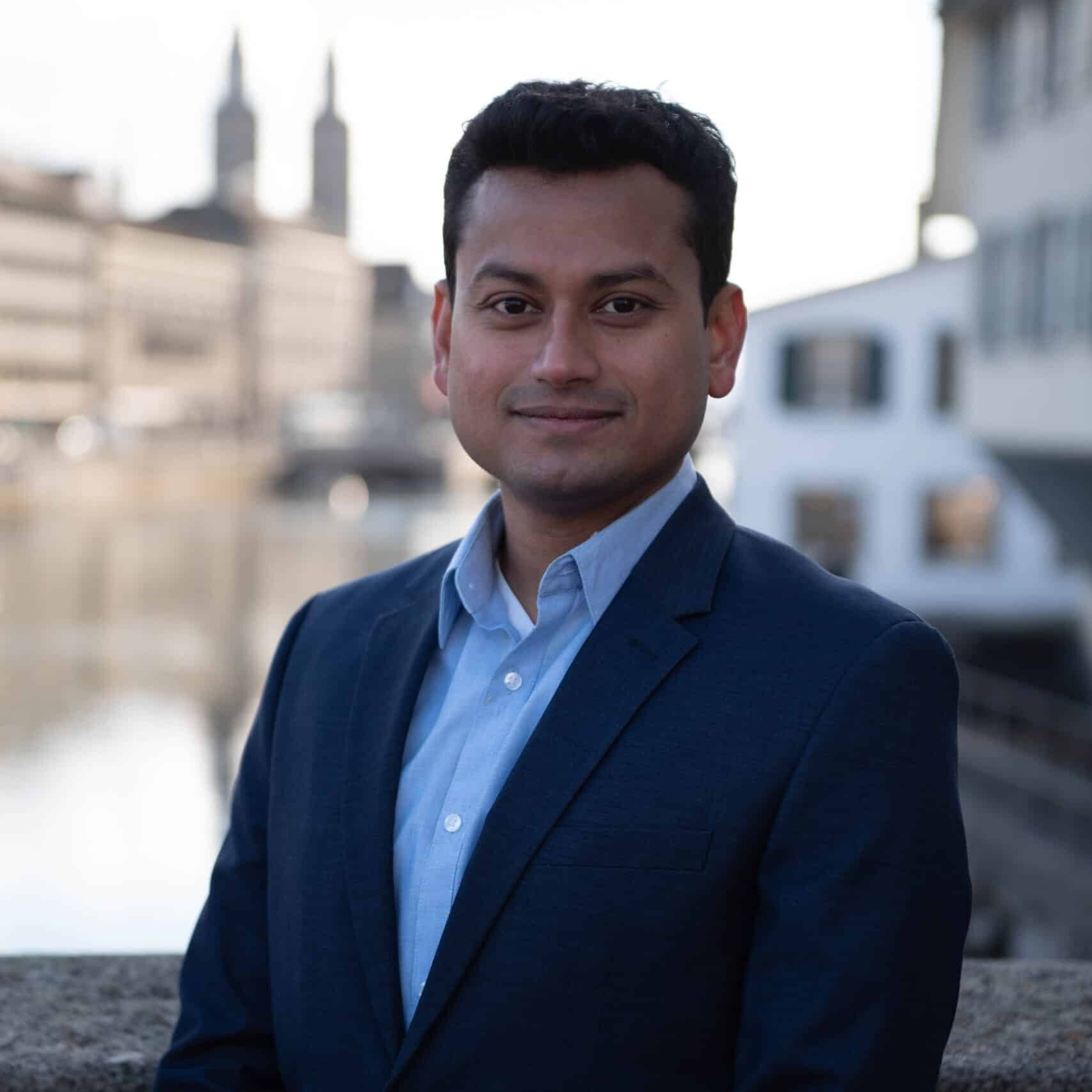
CEO and Co-Founder, Sleepiz
Soumya Sunder Dash is the CEO and Co-Founder of Sleepiz. Originally from India, Soumya came to Europe to further his studies at the Karlsruhe School of Optics and Photonics (KSOP) where he earned a Master’s in Optical Communication. He then attended ETH Zürich where he specialized in wireless signal analysis and received his PhD in electromagnetic fields. He gathered research experience at Forschungszentrum Karlsruhe and the Federal Institute of Metrology (METAS).
People affected by sleep apnea take breathing pauses during the night which leaves them feeling tired during the day. Untreated, it can increase blood pressure and the risk of diabetes. Diagnosing sleep apnea usually means spending a night in a sleep clinic, connected to dozens of cables to measure your vital signs. There are more than 9 million sleep diagnostics tests done every year in the EU but waiting times for this unpleasant experience are still several months long.
Sleepiz has developed a certified medical device that uses a clever combination of radar technology, signal processing and machine learning algorithms to monitor and diagnose sleep apnea without touching the patient. It is less burdensome for individuals, as precise as a sleep lab, and can be applied to monitor other respiratory diseases as well.
Sleepiz has conducted many clinical studies with leading clinics, like Charité Berlin and Ruhrlandklink Essen and other sleep research facilities, proving the accuracy of their algorithms. As a medical device manufacturer, Sleepiz is already selling medical sleep monitoring devices in Switzerland, Germany and India.
In your studies you specialized in wireless communication and electromagnetic fields. How did you wind up applying that knowledge to the field of sleep?
To understand my interest in sleep you have to understand where I come from. I’m an engineer by training. I am fascinated with looking at things, solving problems, and asking questions that are probably mostly ignored or just taken for granted. And health is one of the fundamental topics. Growing up in India, I was very close to my grandmother. And she always looked up to healthcare professionals. She never said that I should be one, but she always saw a certain level of dignity and respect in it. And I think, in a very subconscious manner, I started believing the same. This could be cultural. But when I look back, and I ask myself, why am I interested in health, I feel like it has something to do with these personal experiences.
As for how I wound up focusing on sleep in particular, during my studies, I was part of a collaborative project that looked at how wireless technologies could affect sleep. I was called in because I was considered an expert in wireless signal analysis and so I had the opportunity to work with people from the sleep industry and understand how the field works. I quickly realized that, although we spend a third of our lifetime sleeping, it’s not considered as important a topic within healthcare as you would expect. Coming from a wireless engineering background, the tools and technologies they used felt so outdated. When it comes to sleep, if you want to get diagnosed, you have to go to a sleep lab where they attach 30 cables to your body and then ask you to go to sleep. It was hard for me to accept that this was what they considered state-of-the-art.
Is that when you began thinking about how wireless technology could be applied to sleep monitoring?
At first, I just started asking questions. What was this wire used for? What about the other one? Since there are a finite number of wires, it was easy for me to get a good overview of what is measured in these sleep labs. What I realized was that the sleeping industry was basically stuck in the Jurassic age while technology had progressed dramatically. They were using these rudimentary methods which limited their ability to collect data and ask even larger questions in their research. I naturally started thinking about all the benefits wireless technology could bring to the sleeping industry and how it could be applied to diagnosing sleep disorders. That’s how Sleepiz was born.
Sleepiz uses radar technology, but how does that work in practice?
You have this device that is placed next to you during the night, and it transmits electromagnetic waves, which are not visible to the naked eye, and these waves get reflected off your body. We measure these reflections and from this data, we are able to compute the micro-motions in a person’s body. Our device can detect the movements of the body itself such as an individual’s sleeping position or movements of their limbs, but also compute respiratory patterns and pulse rate, because heartbeats are also micro-level movements within the chest’s wall. We gather all this information and then we use advanced signal processing to classify them.
How much data is needed before a person can receive a diagnosis through Sleepiz?
The purpose of both Sleepiz and sleep lab diagnostics is to understand whether a person has any abnormalities in their breathing while they sleep. The data collected during their sleeping time is then used as an index to quantify how severe the disease is. Here we are talking in particular about sleep apnea and respiratory-related sleep disorders. The current gold standard for diagnosis is going to a sleep lab and sleeping there for one night with all these cables attached. Then you receive a diagnosis and are prescribed a therapy. With Sleepiz, we take measurements for three nights to minimize the possibility of errors, something that is called inter-night variability. This is not usually possible in sleep labs because of time constraints and the costs associated with it.
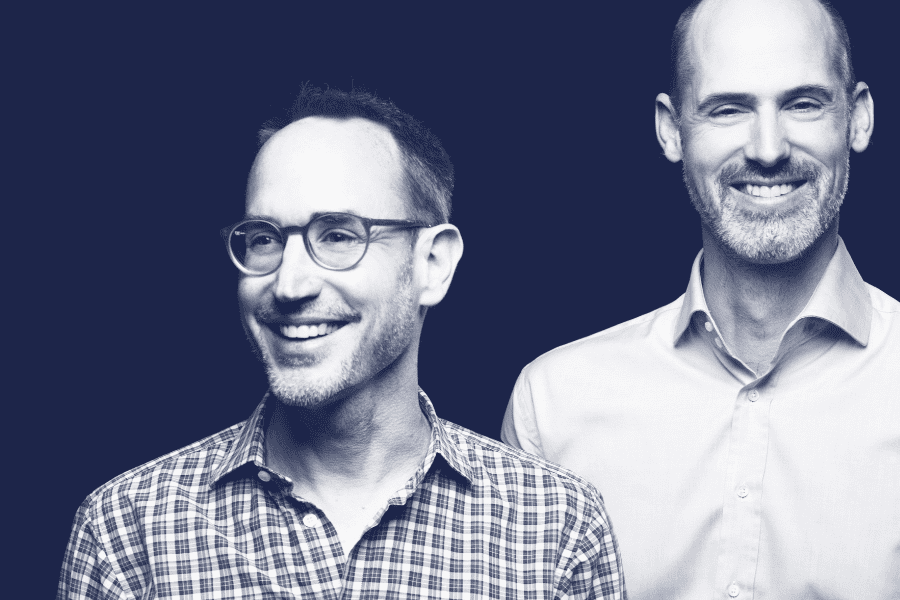
Invest in Startups
As one of Europe’s most active venture capital investors, we grant qualified private investors access to top-tier European startups. With investments starting at EUR/CHF 10’000, you can build your own tailored portfolio over time and diversify across stages and sectors.
One of the components needed to build Sleepiz devices is a microchip. Has the recent global microchip shortage affected you in any way?
I think this is one of the things affecting my own sleep (laughs). There are two main challenges in this. One is the global microchip shortage itself. The second is that we are a certified medical device manufacturing company. The key sensor technology is manufactured here in Switzerland and assembly is done in Slovenia. We source the around 400 components needed to build Sleepiz from across the world, including from the US, Germany and China. Each and every component that we use to build Sleepiz needs to be medically certified. This is why it’s particularly hard for us to switch suppliers. We can’t just go to someone else when one supplier no longer has the component we need. Our product was certified with that component in place so there’s a very complicated process you have to go through to guarantee that any alternative component does not impact your final product in any way. This is even more difficult in the case of microchips because they are considered a critical component in medical devices. It all makes our lives harder, but luckily, we saw the shortage coming very early on. We identified the components that might be at risk and ramped up our inventory with pre-orders of the components.
Sleepiz recently announced a partnership with German microchip manufacturer Infineon. How does this change things?
Infineon is one of the top three microchip manufacturing companies in the world. They are also one of the world’s largest radar manufacturers. We’ve partnered with them to bring out-of-the-box health analytics to smart devices. For example, we know that when you’re sleeping, there are certain stages of your sleep when having a lower room temperature helps you get a much better quality of sleep. Now imagine an intelligent air conditioner that knows your sleep pattern and regulates the temperature according to it. Or a smart TV that automatically turns off when it senses you are sleeping.
Would Infineon microchips also make it possible for Sleepiz to be added to mobile devices?
Yes, radar chips can be integrated into mobile phones. People would be able to use a Sleepiz app to visualize their sleep analytics on their phones, identify any irregularities and be given the option to purchase a premium subscription to get more advanced health insights and alerts. However, we are starting with radar integration in homepods, smart speakers and TVs with sleep analytics visualization via an app. We can also measure cardio-respiratory patterns and we will continue to add more parameters to our portfolio.
Would more general health analytics take Sleepiz into the territory of consumer wearable devices?
We want to democratize the sleep industry. That is our primary goal. Anyone working in the digital health domain relies on wearable technology to provide a 360-degree view of their users. Right now, there is a data gap when it comes to sleep. Sleepiz together with Infineon is aiming to fill that. So we do not see ourselves as competitors for wearables giants like FitBit or Apple Watch, but as someone who could offer complimentary measurements that cover areas they do not address right now. Sleepiz would help users monitor what is happening to their bodies during the night and in their sleep. We want Sleepiz to become the first company that comes to people’s minds when they want to know what’s happening during sleep.
Sleepiz was recently launched in Germany and India. How did that go?
We initially launched in Switzerland and we did well here. We already understood the demand, we knew the channels we could use to address this untapped market. In the second quarter of this year, we launched in Germany and India. The office in India was already operational, but we previously only used it for our software development. Now we are also commercializing our product there. One of the bigger challenges when it comes to these countries is the number of devices they require. They are both much larger markets than Switzerland. We want to first create brand awareness and then ensure that every aspect of our supply chain is working. When you go to new countries, logistical partners change, and so do billing and invoicing procedures. We have to make sure we can deliver on bigger sales volumes before we launch any huge marketing campaigns. We are therefore still working on the business development side in these countries, but I’m optimistic about it. The teams are doing well.
Another market you’re aiming for is the US. Do you have an idea of when you will launch there?
Sleepiz was recently listed with the US Food and Drug Administration (FDA). We became Health Insurance Portability and Accountability Act (HIPAA) compliant as well. Both of these steps are crucial for our launch in the US. We also appointed Robb LaChappelle as VP of Sleepiz USA. He has more than 20 years of experience in the medical device industry and he will now be responsible for accelerating the adoption of Sleepiz in the US healthcare ecosystem. The US is half of the global sleep market and we have to be there. It is a highly competitive market, but I’m confident we can survive and thrive there thanks to our don’t-quit attitude and problem-solving skills.
Written by
WITH US, YOU CANCO-INVEST IN DEEP TECH STARTUPS

Verve's investor network
With annual investments of EUR 60-70 mio, we belong to the top 10% most active startup investors in Europe. We therefore get you into competitive financing rounds alongside other world-class venture capital funds.
We empower you to build your individual portfolio.
More News
28.06.2022
Sympatient is building the first digital anxiety clinic
When startups want to raise money, they can choose between different options. The most commonly used instrument is equity, but other sources of financing such as debt, grants, SAFEs and convertible loans are frequent, too. This article explains what investors need to know about convertible loans, the most common financing form besides equity.
17.09.2021
“I experienced the challenges of bringing a MedTech product to market first-hand”
In this interview, MedTech expert Karina Candrian explains why startups should think about market access and regulatory topics early on.
26.08.2021
Sleepiz raises
CHF 4.4 m Series A
MedTech startup Sleepiz has raised CHF 4.4 million to expand its portfolio to chronic respiratory disease monitoring. The round was led by Verve Ventures and joined by ZKB and the venture arm of a US health insurance company.
Startups,Innovation andVenture Capital
Sign up to receive our weekly newsletter and learn about investing in technologies that are changing the world.


